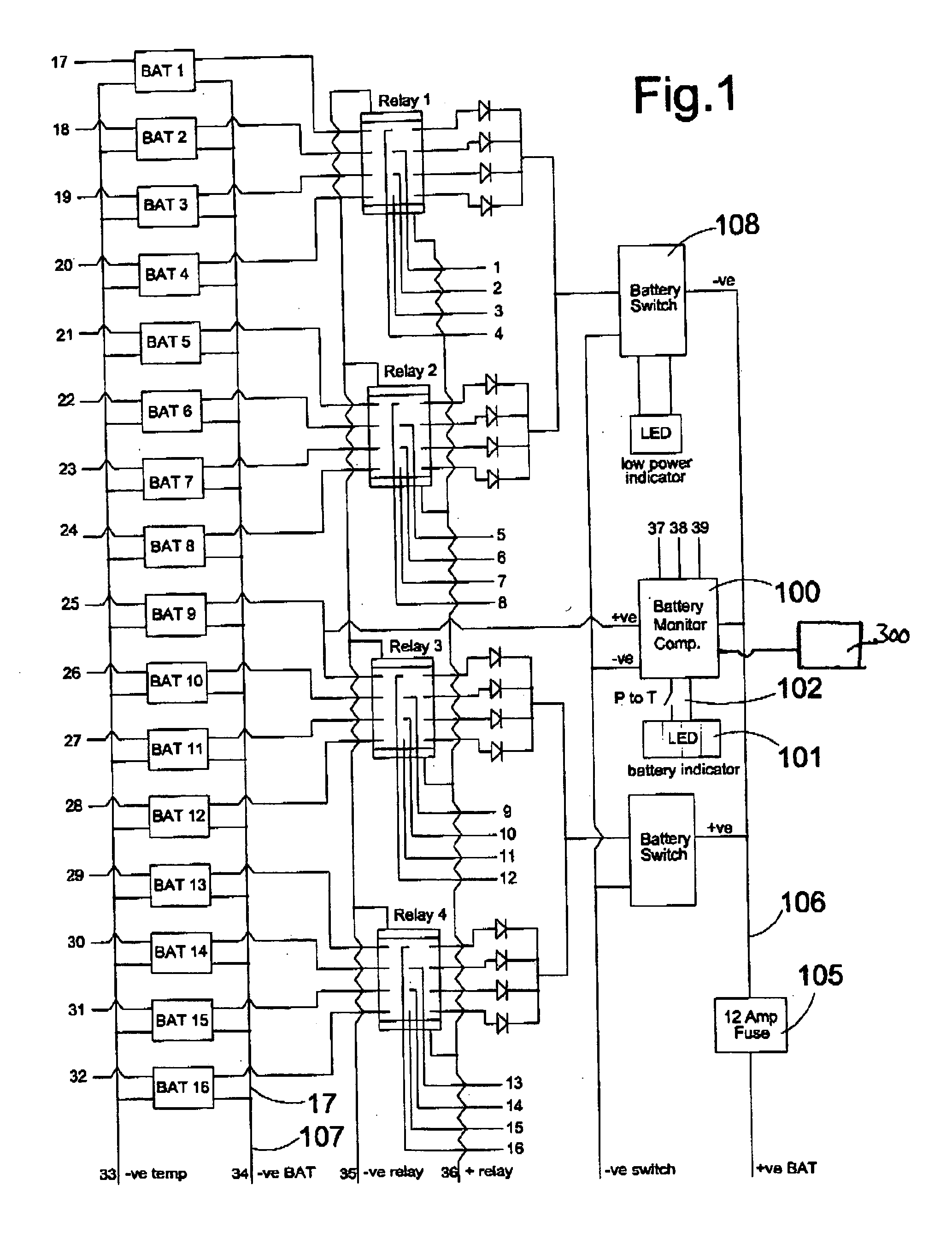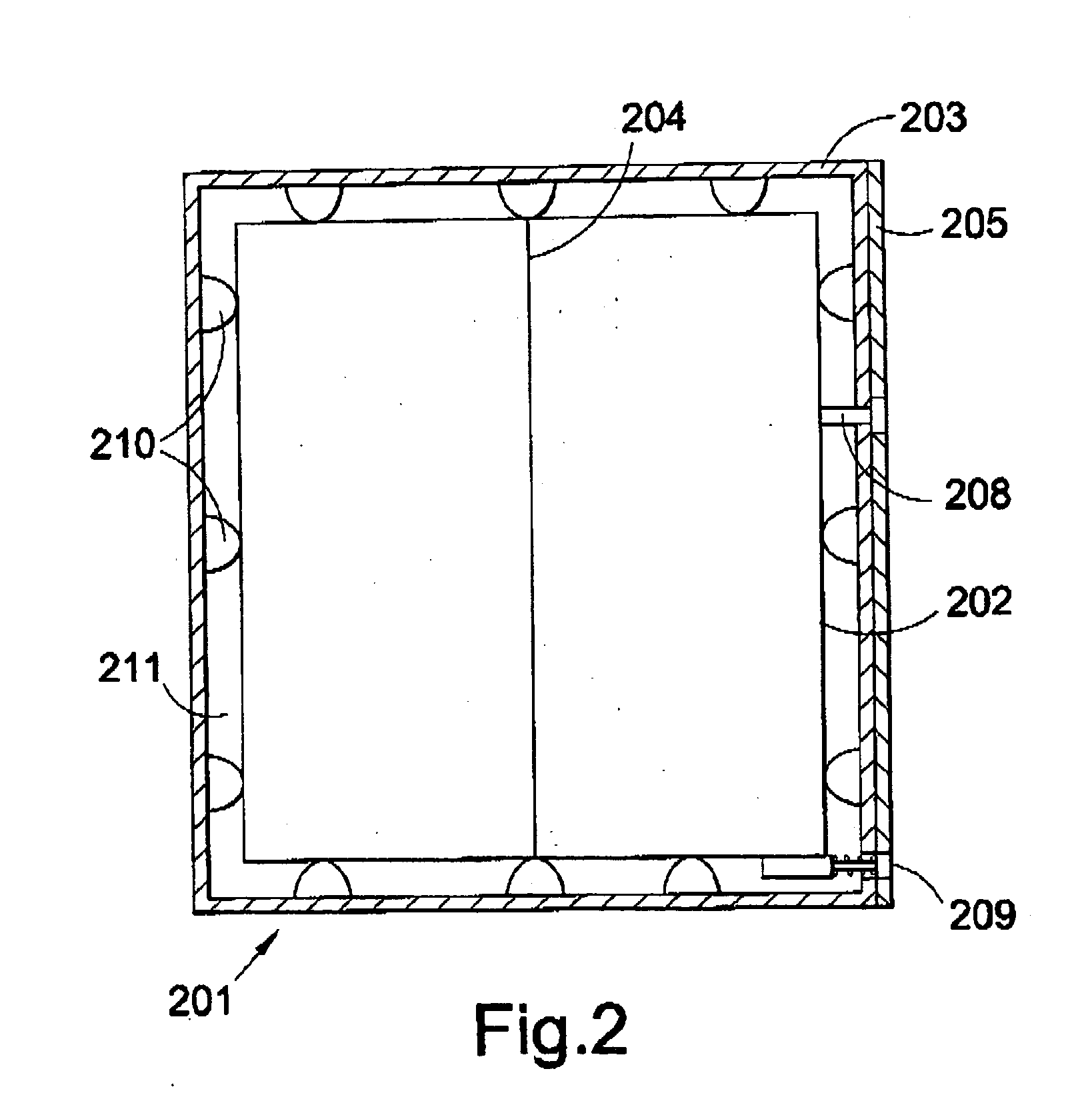Rechargeable batteries
a rechargeable battery technology, applied in the charging circuit of different batteries, electric vehicles, charging circuits, etc., can solve the problems of affecting the safety of electric vehicles, affecting the operation of electric vehicles, and requiring care with these batteries
- Summary
- Abstract
- Description
- Claims
- Application Information
AI Technical Summary
Benefits of technology
Problems solved by technology
Method used
Image
Examples
Embodiment Construction
Referring to FIG. 1, sixteen Ni-MH battery packs BAT 1-BAT 16 each pack having ten cells in series and storing 4 Ah of charge are positioned inside the battery casing 201 (FIG. 2).
Each battery pack BAT 1-BAT 16 contains its own protection devices and allows an in-built redundancy capability down to the last remaining pack.
The casing 201 for the rechargeable battery comprises an inner shell 202, an outer shell 203 made from 2 mm rigidised aluminium, in the shape of a box with a removable lid. All corners and joints at least of the outer shell 203 are welded to improve structural strength and to prevent water from entering the rechargeable battery unit.
Both the inner and outer shells 202, 203 are covered with a double coating of ‘Rilsan Nylon’ giving an extremely hard wearing surface as well as reducing internal condensation to a minimum.
The inner shell 202 is suitably divided into two compartments via a bulk-head, 204 one for the battery packs and the other for the “electron...
PUM
 Login to View More
Login to View More Abstract
Description
Claims
Application Information
 Login to View More
Login to View More - R&D
- Intellectual Property
- Life Sciences
- Materials
- Tech Scout
- Unparalleled Data Quality
- Higher Quality Content
- 60% Fewer Hallucinations
Browse by: Latest US Patents, China's latest patents, Technical Efficacy Thesaurus, Application Domain, Technology Topic, Popular Technical Reports.
© 2025 PatSnap. All rights reserved.Legal|Privacy policy|Modern Slavery Act Transparency Statement|Sitemap|About US| Contact US: help@patsnap.com


